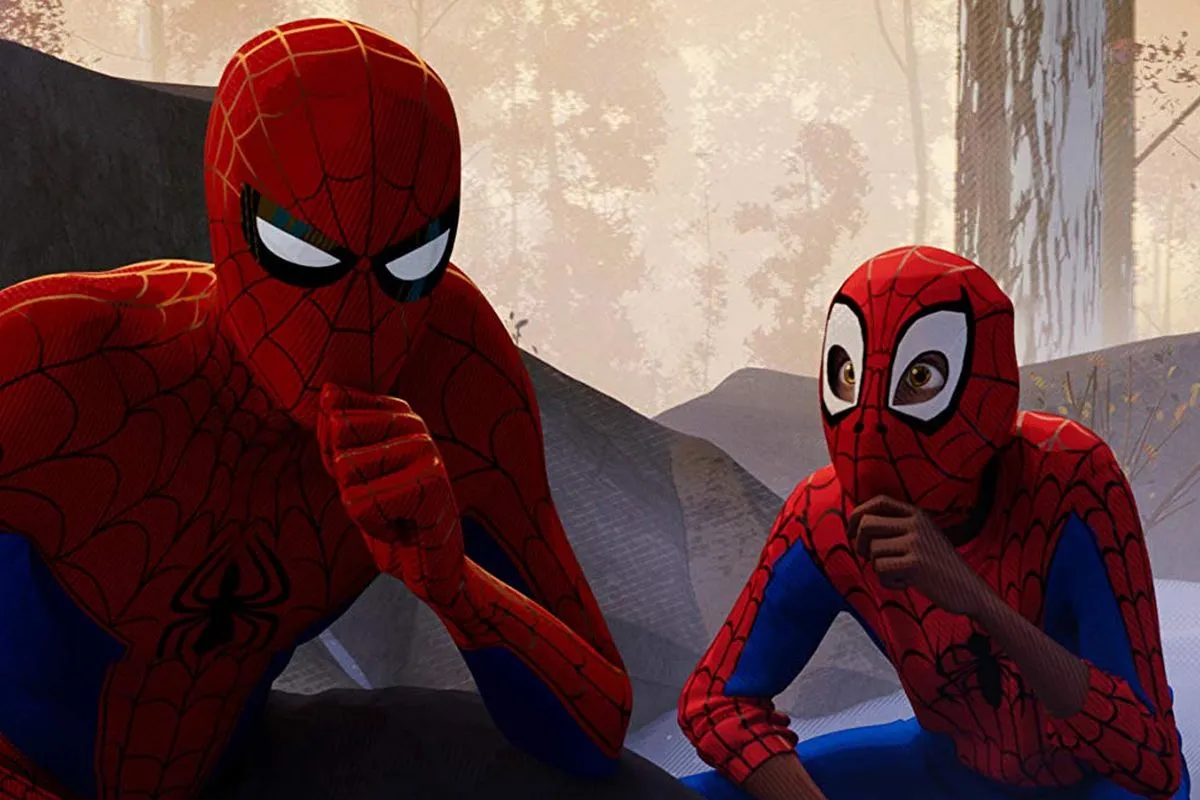I know I’m unfashionably late to the Spider-Verse party. The film came out on December 14th, 2018, and I dragged my heels. I was feeling some superhero fatigue, and I thought I could skip this one for the time being and save the price of admission.
I couldn’t be happier to have been so wrong. Spider-Man: Into the Spider-Verse is a practically perfect film. I’m still in awe of its existence, of the delivery of a cinematic experience so flawless. After watching the movie, I spent hours sitting with friends dissecting every beat, and then sitting on my couch blankly staring. “How?” I kept saying, to the cat, to said friends in ongoing text messages. “How?”
Part of my job is turning a critical eye on movies, and I can’t remember the last time a film—especially a superhero film—didn’t let me down in some way: in the writing, in the representation, in its depiction of women, in its villains, in its final climactic act, in falling back on predictable tropes and twists you can spot from a mile away.
Into the Spider-Verse defies every potential area where it could falter. Its script is witty, funny, moving, cohesive. It is winkingly sly and smart, never pandering to the audience. The puzzle-pieces of its narrative fit so impeccably that I continue with my litany of “How?!”
Its cast of characters is wonderfully diverse, reflective of Miles Morales’ modern-day New York City. The importance of the representation shown onscreen is huge and will change lives.
I wish I could explain the joy watching #IntoTheSpiderverse w/ my nephew. When he first saw Miles onscreen he turned to me and said “that’s me! pic.twitter.com/q7ugzQHHum
— Rebecca Theodore-Vachon (@FilmFatale_NYC) December 16, 2018
As a lifelong New Yorker, the movie felt like a love letter to my city. I’ve never seen a more accurate moment than when Miles and Peter B. Parker are lying collapsed in the crosswalk and thank the city’s citizens for stepping around them without comment. The number of Easter eggs in there about New York probably can’t be tallied, but I hope the creatives know how much the attention to detail means to those of us with a connection to the city.
The movie’s depiction of women is fantastic: from the tough, take-no-prisoners Spider-Gwen, to Miles’ hard-working mother, to a certain surprise villain, there were no one-dimensional ladies.
Speaking of dimensions: the animation is absolutely astounding, just living and breathing in a way I’ve never seen an animated movie come alive before. Sometimes while watching I nearly forgot that we weren’t in the “real world,” except, of course, that the animated environment made more jaw-dropping situations possible than even our best stuntpeople and CGI can manage. There are sequences from this film that are so astonishingly clever and beautiful they will be with me for a long, long time.

The movie’s tongue-in-cheek approach to past incarnations of Spider-Man in the movies was refreshing and hilarious. Did you expect a reference to Tobey McGuire’s much-maligned dance in Spider-Man 3 to pop up in this film? Me neither.
The voice cast is exceptional, with well-known voices mixed in there like a gift to be unwrapped as you wonder to yourself, “Is that—?” (Chris Pine as the blue-eyed super-heroic Spider-Man, Nicolas Cage growling it up as Spider-Noir, Liev Schreiber as the menacing Kingpin, Millenial fave comedian John Mulaney as Spider-Ham, Lily Tomlin as a worldly-wise Aunt May, to start). As Miles, Shameik Moore gives a pitch-perfect performance, conveying Miles’ wonder, adolescent confusion, and bravery. Mahershala Ali was the ideal choice to make Uncle Aaron sound distinct and powerful, and Brian Tyree Henry—a hugely talented actor I had the pleasure of seeing on Broadway—gives Miles’ father Jefferson the perfect mix of strength and fatherly softness.
Even the film’s soundtrack is transporting and exquisite in its composition, in the way the songs tell the story, too. The music pairs perfectly with the animation in more sequences than I could count, heightening the action or drama on-screen, and if you buy the soundtrack or stream it on a service like Spotify you’re going to find yourself listening to it again and again and again.
After such a dazzling accomplishment of a movie, the after-credits scene almost feels like bragging, introducing us to further Spider-Men and incorporating what’s now a familiar meme. It’s as though Into the Spider-Verse‘s creatives were just like, “Why not drop a cherry on top of this delicious, masterful, mind-blowing sundae?”
If this article can convince even one person who’s on the fence to go see Into the Spider-Verse, I will feel that my work here is done. If it reminds you that it may be time to see it a second time, or a third, I’m right behind you. This movie deserves all of our money and every accolade it has so rightfully earned.
(images: Sony)

Want more stories like this? Become a subscriber and support the site!
—The Mary Sue has a strict comment policy that forbids, but is not limited to, personal insults toward anyone, hate speech, and trolling.—










Published: Jan 21, 2019 01:15 pm